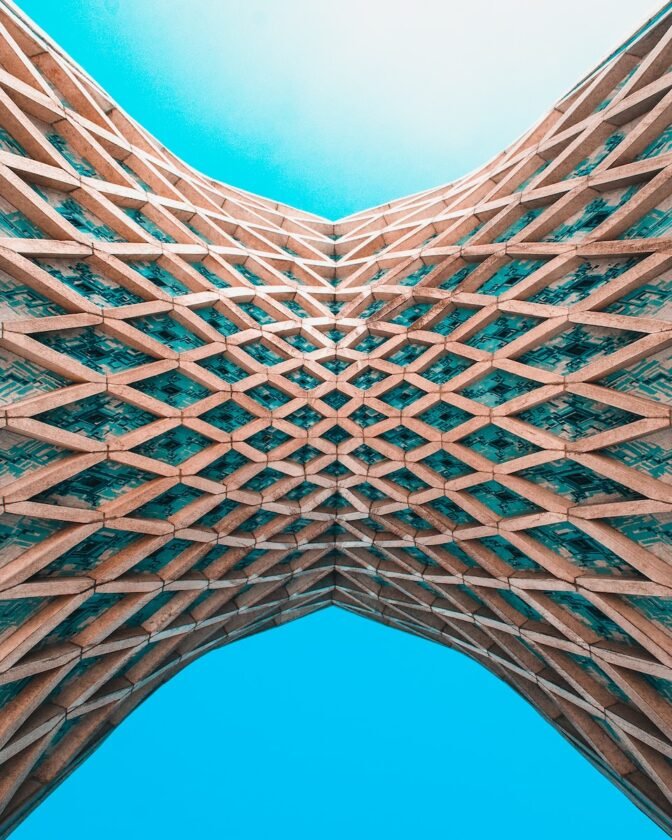When it comes to innovative building design, one of the most exciting developments is the concept of “structural skin“. This cutting-edge approach is changing the way architects and engineers think about building exteriors, and has the potential to revolutionize the construction industry as a whole.
In this article, we’ll take a closer look at what structural skin is, how it works, and why it’s becoming such a popular choice for architects and builders. We’ll explore some of the most exciting examples of structural skin in action, and consider the advantages and challenges of this approach.
What is Structural Skin?
At its most basic level, structural skin is an approach to building design that incorporates the exterior cladding of a building into its structural system. Rather than treating the skin of a building as a decorative afterthought, structural skin makes it an integral part of the building’s overall design and functionality.
This means that the cladding or outer layer of a building is not just a decorative feature, but serves a functional purpose. It can provide structural support, protect against the elements, or even generate energy. By combining the skin and structure of a building, architects and engineers can create buildings that are more efficient, sustainable, and visually striking.
The Advantages of Structural Skin
There are many advantages to the structural skin approach. Here are just a few:
1. Improved Energy Efficiency
One of the most significant benefits of structural skin is its ability to improve the energy efficiency of a building. By using the exterior cladding as an insulating layer, buildings can reduce their energy consumption by minimizing heat transfer through the walls. This can lead to significant cost savings and reduced environmental impact.
2. Greater Design Flexibility
Structural skin also offers greater design flexibility than traditional building methods. By integrating the skin and structure of a building, architects can create more organic and fluid forms that are not constrained by the need for separate cladding systems. This allows for more creative expression in building design, and can result in visually striking and iconic buildings.
3. Increased Structural Resilience
Another advantage of structural skin is its potential to increase the structural resilience of a building. By incorporating the cladding into the structural system, buildings can better withstand external forces such as wind, earthquakes, or impacts. This can make buildings safer and more durable in the face of natural disasters or other challenges.
Examples of Structural Skin in Action
There are many exciting examples of structural skin in action around the world. Here are just a few:
1. The Gherkin, London
One of the most iconic examples of structural skin is The Gherkin, a 41-story skyscraper in London. Designed by Foster + Partners, the building features a distinctive, curving shape that is achieved through the use of a diagrid structural system clad in a glass skin. The exterior cladding serves both a functional and decorative purpose, reducing solar heat gain and providing a striking visual statement in the heart of the city.
2. The Bullitt Center, Seattle
Another impressive example of structural skin is the Bullitt Center in Seattle, Washington. This six-story office building is designed to be one of the greenest commercial buildings in the world, and features an exterior skin made of wood that is sustainably harvested from the Pacific Northwest. The wood serves as both a structural and aesthetic element, while also providing natural insulation and regulating indoor air quality.
3. The Biomimetic Office Building, Germany
The Biomimetic Office Building in Freiburg, Germany is another fascinating example of structural skin in action. Designed by architect Werner Sobek, the building features an exterior cladding system made of glass panels that mimic the structure of butterfly
wings. The panels are arranged in a way that maximizes natural light and ventilation, while also providing structural support and minimizing the building’s environmental impact. The result is a building that is both beautiful and functional, and that serves as a model for sustainable building design.
Challenges and Considerations
While the advantages of structural skin are clear, there are also some challenges and considerations to keep in mind. Here are a few:
1. Cost
One of the biggest challenges of structural skin is its cost. Because the approach requires careful integration of the skin and structure of a building, it can be more expensive than traditional building methods. However, the long-term benefits of increased energy efficiency and durability can help offset these costs over time.
2. Maintenance
Another consideration with structural skin is maintenance. Because the exterior cladding serves a functional purpose, it requires regular upkeep to ensure that it continues to perform its intended functions. This can include cleaning, repairs, and replacement of damaged panels.
3. Compatibility
Finally, it’s important to ensure that the materials used in a structural skin system are compatible with one another. Because the skin and structure of a building are closely integrated, any incompatibilities or weaknesses in the materials can compromise the entire building system.
Conclusion
In conclusion, the concept of structural skin is an exciting development in building design that has the potential to transform the construction industry. By integrating the exterior cladding of a building into its structural system, architects and engineers can create buildings that are more efficient, sustainable, and visually striking. While there are challenges and considerations to keep in mind, the benefits of structural skin make it a compelling choice for builders and designers around the world.
FAQs
What is the difference between structural skin and traditional building methods?
Structural skin integrates the exterior cladding of a building into its structural system, while traditional building methods treat the skin as a separate and decorative element.
How does structural skin improve energy efficiency?
By using the exterior cladding as an insulating layer, buildings can reduce their energy consumption by minimizing heat transfer through the walls.
What are some examples of buildings with structural skin?
Examples include The Gherkin in London, the Bullitt Center in Seattle, and the Biomimetic Office Building in Germany.
What are some challenges of structural skin?
Challenges include cost, maintenance, and ensuring compatibility of materials.
Is structural skin a sustainable building method?
Yes, because it can improve energy efficiency and reduce environmental impact, structural skin is considered a sustainable building method.

As an architecture and interior designer, I am passionate about creating spaces that inspire and delight those who inhabit them. With over a decade of experience in the industry, I have honed my skills in both the technical aspects of design and the art of crafting beautiful, functional spaces.
After earning my degree in architecture, I began my career working for a prestigious firm where I was exposed to a wide range of projects, from commercial buildings to high-end residential properties. During this time, I developed a keen eye for detail and a deep appreciation for the importance of form and function in design.
In recent years, I have struck out on my own, founding my own design studio where I have been able to further explore my passion for interior design. I believe that a well-designed space can transform the way people live and work, and I take pride in working closely with clients to understand their needs and create spaces that exceed their expectations.
Throughout my career, I have been recognized for my innovative and creative approach to design, and have been honored with a number of awards and accolades. When I’m not working on design projects, you can find me exploring the outdoors or seeking inspiration in the world around me.



